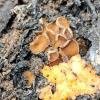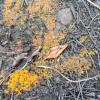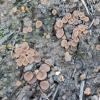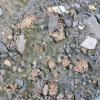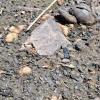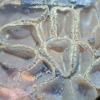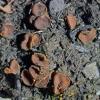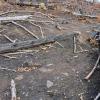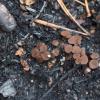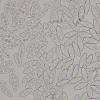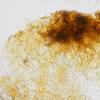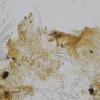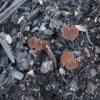
08-12-2025 21:04
Mark Stevens"Hello everyone,I'm relatively new to microscopy (

08-12-2025 18:59
 Lothar Krieglsteiner
Lothar Krieglsteiner
.. found by a seminar-participant, I do not know t

08-12-2025 17:37
 Lothar Krieglsteiner
Lothar Krieglsteiner
20.6.25, on branch of Abies infected and thickened

07-12-2025 16:07
Arnold BüschlenHallo, ich habe in einer Moos-Aufsammlung (epiphy

16-03-2014 22:00
Hello,I found this species a few months ago but ha

08-12-2025 13:39
Thomas Læssøehttps://svampe.databasen.org/observations/10572899

05-12-2025 17:33
 Bruno Coué
Bruno Coué
Bonjour, je serais heureux de recueillir votre avi
 Dear collegues,
Dear collegues,today I found on a very fresh fire place (forest fire, appr. 4 weeks ago) besides millions of Anthracobia macrocystis and A. tristes a dark brown discomycete grown in dense fascicels which I can not determine at all.
At first I thought it could be a Pseudombrophila, but it is not. The exterieur looked like beset with web-like s hairs, but it turned out to be a kind of resinous amorphous mass with only a few hyphoids between.
Spores are fusoid, multiguttulate, 16,5-18,5 x 6 µm.
Paraphyses only slightly enlarged at the tip, often somewhat bent, but also sometimes +/- straight, no carotinoids and no guttules at all, but they seem to contain a vacuolar pigment and probably additionally some faint incrustations at the upper part, not branched.
Asci eight-spored, quite short, appr. 135 x 10 µm.
The species is growing in dense fascicules as well as gregarious or even scattered.
I was thinking of Paranthracobia rhemii, but the spores are far to small. On the other hand there is an "Anthracobia pseudorehmii ad int." annotated by Nicolas van Vooren in the Anthracobia-key of Hohmeyer & Schnackertz (doi: 10.25664/KEY-0005). This one would suite quite well, butz may be I'm complete in a wrong genus with my fungus ....
Thank you for any hints,
Andreas

I'm working with Alexander Karich (I suppose you know him) on a revision of Anthracobia spp. Your collection of A. macrocystis is interesting for this study, because this is probably the rarest species in this genus, and we lack molecular data. So if you can send a part to me, this would be cool.
About the another species, so called "A. pseudorehmii", Alexander also found it during his survey in German burnt sites. And this is not an Anthracobia. The preliminary results place it in the genus Warcupia! I suspect also Anthracobia uncinata to belong to the same genus.
Of course, a molecular confirmation should be welcome and we can do it in the course of our study.
You can contact me if need more details.
Best.
Nicolas
Edit: what differs compared to Andreas‘ specimens is that the ascocarps have a darker brown outside compared to the hymenium- could this be because they were wet? Or this is something else..


